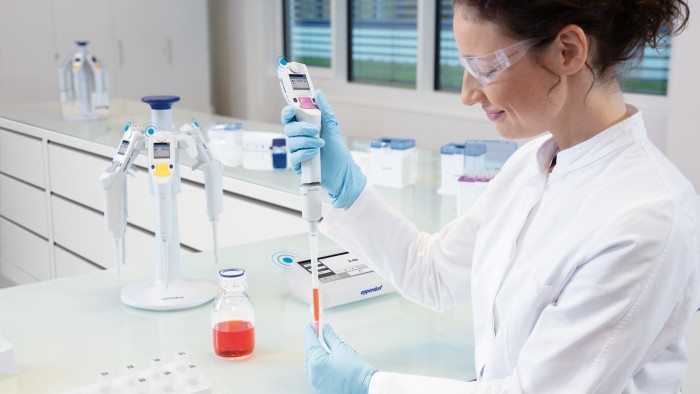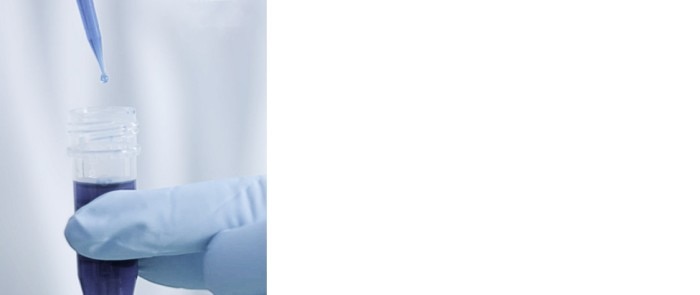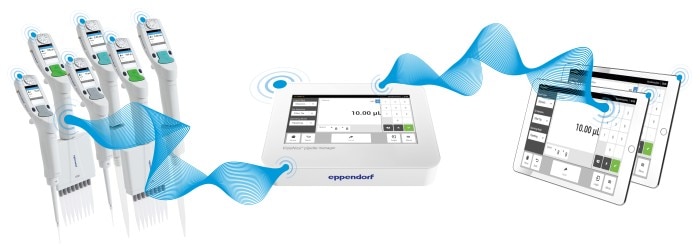MENU
AR | ARS
AR | ARS
No results found
Search Suggestions

How to reduce pipetting errors and improve lab efficiency with connected electronic pipettes
Lab Academy
- Cell Biology
- Lab Life
- Lab Routine
- Pipetting & Dispensing
- Reproducibility
- Digital Lab Solutions
- Pipettes
- Pipette Tips
- Essay
In the fast-paced environment of life science research, precision is paramount. Every droplet of reagent, every microliter of sample, and every data point can influence the reliability and reproducibility of experimental data. Performing consistent, accurate pipetting is a basic prerequisite to gaining reliable experimental data and achieving Good Lab Practice (GLP) [1].

Figure 1: Accurate Dosing of Liquid Volumes
Liquid handling is one of the most essential tasks performed by researchers; from sample preparation to cell culture, performing assays, and delivering precise volumes of liquid, pipetting is central to an endless range of lab operations. Underpinning the vast majority of these liquid handling tasks is the humble micropipette. Being one of the most well-worn tools on any lab bench, life scientists are religiously trained in their operational and technical fundamentals. Despite the emphasis on scientists perfecting their technique, mechanical pipetting is a laborious task, with errors remaining commonplace.
This should come as no surprise to many lab scientists – day-to-day liquid handling tasks can be physically and mentally demanding. Manually pipetting precise and tiny volumes of various liquids into hundreds or thousands of microwells takes a great deal of skill and concentration, and when performed daily, even the most experienced pipette users make occasional errors. Human errors in proper pipette usage, variability in technique, and the mechanical limitations of traditional pipettes can all contribute to inaccuracies in pipetting. These errors can have serious implications, resulting in skewed data, failed experiments, plus increased costs due to wasted reagents and valuable samples.
This should come as no surprise to many lab scientists – day-to-day liquid handling tasks can be physically and mentally demanding. Manually pipetting precise and tiny volumes of various liquids into hundreds or thousands of microwells takes a great deal of skill and concentration, and when performed daily, even the most experienced pipette users make occasional errors. Human errors in proper pipette usage, variability in technique, and the mechanical limitations of traditional pipettes can all contribute to inaccuracies in pipetting. These errors can have serious implications, resulting in skewed data, failed experiments, plus increased costs due to wasted reagents and valuable samples.
Read more
Read less
With labs becoming increasingly digitalized, mechanical micropipettes fall short of the opportunities because they are missing features, such as data logging and connectivity, that could be leveraged to curtail pipetting errors. Recognizing the need to bring pipettes into the digital lab arena, Eppendorf has developed the Pipette Manager, a connected electronic pipette platform that stands to transform handheld pipetting with digital connectivity and documentation, improved user-friendliness, plus increased reproducibility when working with different kinds of liquids in the lab. In this article, we’ll explore how connected electronic pipettes can help to minimize pipetting errors and improve overall lab efficiency.
From the student benchtop to the most cutting-edge research facilities, mechanical pipetting is a practice that is central to many everyday lab operations. The mechanical micropipette has become a ubiquitous tool for life science labs, with benefits including their low up-front cost and the minimal time it takes to train scientists. However, despite its advantages, mechanical pipetting comes with its fair share of challenges.
Mechanical micropipettes can be a hotbed for human error – variations in technique, such as inconsistent pipetting speed or incorrect angle can lead to inaccuracies in aspirated/dispensed volumes. Fatigue, both mental and physical, can set in during long and repetitive pipetting tasks, with some scientists reporting repetitive strain injury (RSI) or longer-term dexterity issues following long periods of intense use. What’s more, mechanical pipetting is limited by the dexterity and steadiness of the operator’s hand, making it particularly challenging when working with small volumes.
Many liquids do not lend themselves to easy pipetting. In particular, non-aqueous liquids can be volatile or viscous, creating difficulties when trying to handle or pipette them accurately. These often require more specialized techniques and/or equipment to dispense in a standardized manner. For example, non-aqueous liquids should ideally be handled with positive displacement pipettes or dispensers (e.g., Multipette® multi-dispensers from Eppendorf ).
Alternatively, traditional air-cushioned micropipettes may be implemented to a certain degree, and with an acceptable loss of accuracy/precision, but success is heavily reliant on the scientist having relevant training/experience, and the ability to maintain proper technique throughout.
Outside of ergonomic and operational limitations, the documentation and traceability of pipetting steps can be outdated and overbearing with mechanical pipettes, potentially leading to data recording errors and compliance issues.
More tips on how to pipette any type of liquid, no matter how challenging
Challenges associated with mechanical pipettes
From the student benchtop to the most cutting-edge research facilities, mechanical pipetting is a practice that is central to many everyday lab operations. The mechanical micropipette has become a ubiquitous tool for life science labs, with benefits including their low up-front cost and the minimal time it takes to train scientists. However, despite its advantages, mechanical pipetting comes with its fair share of challenges.
Mechanical micropipettes can be a hotbed for human error – variations in technique, such as inconsistent pipetting speed or incorrect angle can lead to inaccuracies in aspirated/dispensed volumes. Fatigue, both mental and physical, can set in during long and repetitive pipetting tasks, with some scientists reporting repetitive strain injury (RSI) or longer-term dexterity issues following long periods of intense use. What’s more, mechanical pipetting is limited by the dexterity and steadiness of the operator’s hand, making it particularly challenging when working with small volumes.
Many liquids do not lend themselves to easy pipetting. In particular, non-aqueous liquids can be volatile or viscous, creating difficulties when trying to handle or pipette them accurately. These often require more specialized techniques and/or equipment to dispense in a standardized manner. For example, non-aqueous liquids should ideally be handled with positive displacement pipettes or dispensers (e.g., Multipette® multi-dispensers from Eppendorf ).
Alternatively, traditional air-cushioned micropipettes may be implemented to a certain degree, and with an acceptable loss of accuracy/precision, but success is heavily reliant on the scientist having relevant training/experience, and the ability to maintain proper technique throughout.
Outside of ergonomic and operational limitations, the documentation and traceability of pipetting steps can be outdated and overbearing with mechanical pipettes, potentially leading to data recording errors and compliance issues.
More tips on how to pipette any type of liquid, no matter how challenging
Read more
Read less
Minimizing pipetting errors with electronic pipettes
Electronic pipettes, or ‘e-pipettes’, are swiftly transforming the way liquid handling tasks are approached in laboratories. This next generation of pipetting instruments leverage user-friendly electronic controls and smart technology to offer a level of accuracy and precision that surpasses mechanical pipetting and substantially reduces pipetting errors. With digital controls, electronic pipettes enable scientists to consistently aspirate and dispense exact volumes, enhancing the reproducibility of their experiments. One line of electronic pipettes in particular makes pipetting tasks more ergonomic, reproducible, efficient, and easy. Known as Eppendorf Xplorer® e-pipettes, these innovative electronic devices enable liquid aspiration and dispensing at the press of a light-touch button (Fig 1), improving comfort, and saving time and energy while ensuring user-to-user reproducibility. These e-pipettes can perform an array of dispensing techniques, including pipetting, mixing, repeated dispensing, and volume determination. Storable volume settings and protocols are also available, accelerating routine pipetting tasks
Read more
Read less

Figure 3: An overview of the main operating components of an Eppendorf Xplorer electronic pipette.
Electronic pipettes contribute to improved operational efficiency in the lab, while minimizing fatigue associated with repetitive actions. By making the change from mechanical to electronic pipettes, labs can improve the accuracy, precision, and reproducibility of results and boost efficiency, all of which combine to ensure reliable and streamlined scientific research.
Discover simply better pipetting with Eppendorf Xplorer® pipettes
Discover simply better pipetting with Eppendorf Xplorer® pipettes
Read more
Read less
Connected electronic pipettes
Connected electronic pipette systems are the latest evolution in pipette technology, bringing pipettes into the world of lab digitalization to provide an array of additional features and benefits. By offering connectivity and data-logging features, connected pipettes can help to improve process traceability and minimize documentation errors. By improving traceability and data logging, connected pipette systems can support compliance with regulatory standards and strengthen overall data integrity.
Leading connected electronic pipette systems, such as the Eppendorf Pipette Manager , unlock improved efficiency, increased reproducibility, and digital documentation of every liquid handling workflow step. The standalone system is controlled by a central external server with a touch screen, which can communicate with up to 30 Eppendorf Xplorer e-pipettes at once via a dedicated, secure WiFi set up by the system (Fig 2). From this control panel, or via a connected tablet, it is possible to quickly input pipetting volumes and other parameters, with all settings transferred to the connected pipettes for immediate use.
Read more
Read less

Figure 4: The Eppendorf Pipette Manager can communicate with up to 30 Eppendorf Xplorer pipettes at once via the control panel, or, when working with multiple users in parallel, via tablets.
As well as being able to control pipetting volumes and receive feedback on suitable pipettes for the volume set, Pipette Manager users can also access optimal pipette settings for different types of liquids, including viscous and volatile substances, allowing users to tackle the most difficult pipetting tasks with confidence. With regular firmware updates, several pre-defined liquid types, and the option to save custom liquid types and their respective pipette settings (such as pre-wetting steps, aspiration, and dispensing speed), the Pipette Manager is adaptable and up-to-date with evolving scientific needs.
Every pipetting step taken with a connected Xplorer pipette can be recorded and the documentation — including timestamps, pipettes used, and pipetting volumes — may be exported as a professional PDF for further use, e.g., to complement the digital lab notebook. The myriad of electronic pipette benefits and novel features provided make connected pipette systems like the Pipette Manager indispensable tools for laboratories seeking improved accuracy and efficiency, plus enhanced data management, collaboration, and adaptability in their operations.
Connected electronic pipette systems like the Pipette Manager are exceptionally versatile, and can be a valuable asset to a wide variety of labs. From university teaching labs to tightly-controlled research facilities, reducing pipetting errors and boosting data integrity can be highly beneficial for the majority of lab settings. Connected electronic pipettes find ideal applications in daily tasks, as well as more specialized workflows requiring regular volume changes. Applied industries, such as water testing and oil analysis, can reap the benefits of digital documentation, enabling improved transparency and quality assurance and quality control (QA/QC) of liquid handling processes during testing. Some of the well-suited applications of connected electronic pipettes include:
Daily pipetting tasks
Connected electronic pipettes are an invaluable tool for routine laboratory work, simplifying daily tasks such as sample preparation, dilution series, and reagent dispensing. The enhanced precision, through pre-defined settings for different liquid types, ensures that everyday tasks are executed with the best possible accuracy, reducing the likelihood of pipetting errors and making everyday operations more time and labor-efficient.
Complex workflows
For specialized workflows that require multiple volume changes, such as PCR setup, and NGS prep, connected electronic pipette systems like the Pipette Manager excel. Connected pipettes can perform rapid and precise volume adjustments, that are easily and comfortably programmed via the control panel touch screen, simplifying complex liquid handling workflows and ensuring that each step is executed with an extraordinary precision.
QA/QC in applied industries
Connected electronic pipette systems are an ideal solution to support applied industries such as the analysis and testing of minerals, oils, and water. Maintaining QA in these industries demands a high degree of transparency throughout liquid handling processes. The improved data documentation and tracking provided by connected pipette systems can help lab workers to ensure complete traceability of processes and data, improving industry standards.
Electronic pipettes and connected pipette systems are revolutionizing liquid handling. Providing a means of reducing pipetting errors and physical strain associated with mechanical pipettes, e-pipettes can offer substantial benefits to a variety of lab settings. Connected pipette systems transform e-pipettes into smart devices, giving rise to a host of additional features and benefits, unlocking improved standardization, data-logging, and efficiency in the lab. Eppendorf Xplorer electronic pipettes, coupled with the innovative Pipette Manger system offer a comprehensive package for labs seeking to improve the accuracy and reliability of their data and to reduce the incidence of pipetting errors.
Ready to embrace connectivity?
Every pipetting step taken with a connected Xplorer pipette can be recorded and the documentation — including timestamps, pipettes used, and pipetting volumes — may be exported as a professional PDF for further use, e.g., to complement the digital lab notebook. The myriad of electronic pipette benefits and novel features provided make connected pipette systems like the Pipette Manager indispensable tools for laboratories seeking improved accuracy and efficiency, plus enhanced data management, collaboration, and adaptability in their operations.
Applications of connected electronic pipettes
Connected electronic pipette systems like the Pipette Manager are exceptionally versatile, and can be a valuable asset to a wide variety of labs. From university teaching labs to tightly-controlled research facilities, reducing pipetting errors and boosting data integrity can be highly beneficial for the majority of lab settings. Connected electronic pipettes find ideal applications in daily tasks, as well as more specialized workflows requiring regular volume changes. Applied industries, such as water testing and oil analysis, can reap the benefits of digital documentation, enabling improved transparency and quality assurance and quality control (QA/QC) of liquid handling processes during testing. Some of the well-suited applications of connected electronic pipettes include:
Daily pipetting tasks
Connected electronic pipettes are an invaluable tool for routine laboratory work, simplifying daily tasks such as sample preparation, dilution series, and reagent dispensing. The enhanced precision, through pre-defined settings for different liquid types, ensures that everyday tasks are executed with the best possible accuracy, reducing the likelihood of pipetting errors and making everyday operations more time and labor-efficient.
Complex workflows
For specialized workflows that require multiple volume changes, such as PCR setup, and NGS prep, connected electronic pipette systems like the Pipette Manager excel. Connected pipettes can perform rapid and precise volume adjustments, that are easily and comfortably programmed via the control panel touch screen, simplifying complex liquid handling workflows and ensuring that each step is executed with an extraordinary precision.
QA/QC in applied industries
Connected electronic pipette systems are an ideal solution to support applied industries such as the analysis and testing of minerals, oils, and water. Maintaining QA in these industries demands a high degree of transparency throughout liquid handling processes. The improved data documentation and tracking provided by connected pipette systems can help lab workers to ensure complete traceability of processes and data, improving industry standards.
Better connected
Electronic pipettes and connected pipette systems are revolutionizing liquid handling. Providing a means of reducing pipetting errors and physical strain associated with mechanical pipettes, e-pipettes can offer substantial benefits to a variety of lab settings. Connected pipette systems transform e-pipettes into smart devices, giving rise to a host of additional features and benefits, unlocking improved standardization, data-logging, and efficiency in the lab. Eppendorf Xplorer electronic pipettes, coupled with the innovative Pipette Manger system offer a comprehensive package for labs seeking to improve the accuracy and reliability of their data and to reduce the incidence of pipetting errors.
Ready to embrace connectivity?
Read more
Read less
References
1. Pushparaj P. N. (2020). Revisiting the Micropipetting Techniques in Biomedical Sciences: A Fundamental Prerequisite in Good Laboratory Practice. Bioinformation, 16(1), 8–12.
For other helpful articles related to pipetting technique, ergonomics and maintenance check out www.eppendorf.com/pipettes
1. Pushparaj P. N. (2020). Revisiting the Micropipetting Techniques in Biomedical Sciences: A Fundamental Prerequisite in Good Laboratory Practice. Bioinformation, 16(1), 8–12.
For other helpful articles related to pipetting technique, ergonomics and maintenance check out www.eppendorf.com/pipettes
Read more
Read less
Read more
Read less
Related files:
Read more
Read less
Related products:
Read more
Read less
